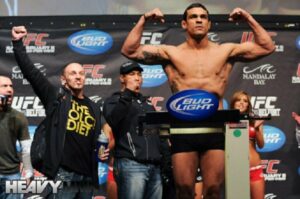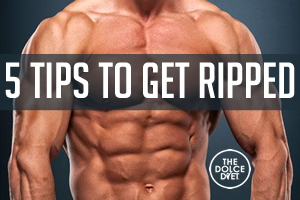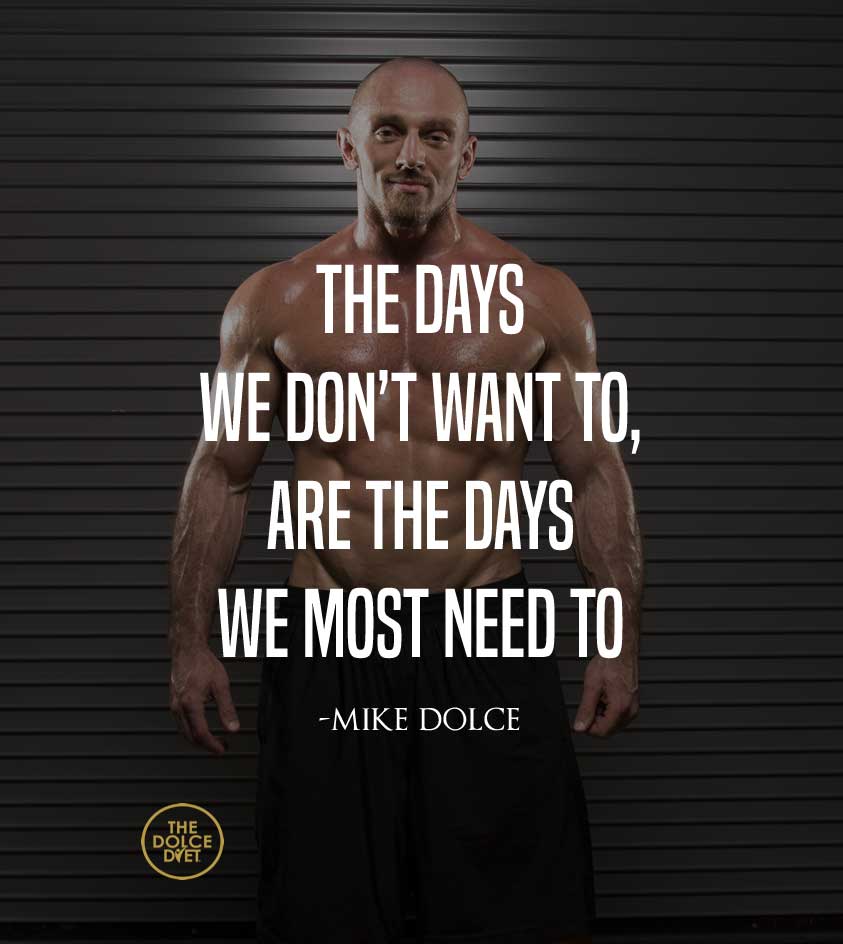
by Ben Fowlkes
When Mike Dolce’s cell phone buzzes with an unfamiliar number a few days before a major MMA event, he already knows what’s coming.
Dolce’s primary work is as a nutritionist, managing the day-to-day food intake of pro athletes with precision focus. But the creator of “The Dolce Diet” is also known to be something of an expert at temporary weight-cutting, and a last minute call to Dolce means that somewhere, some fighter is panicking.
“I get phone calls the week of, or the night before weigh-ins sometimes,” Dolce said. “I’ve taken same- day requests. I’ve gotten there on the day of the weigh-ins, got in there and gotten it done. I’m able to work a little magic then, but if they’re calling me at that point, they already screwed up.”
For almost every MMA fighter, from scrubs to superstars, cutting weight is just part of life, even if fans rarely get a glimpse of what goes into it. For men who want to be as light as possible on Friday afternoon and as big and strong as possible on Saturday night, making weight isn’t as simple as showing up and stripping down to their underwear. Doing it the wrong way can hamper their abilities on fight night. Even doing it the right way can be tough on the mind and body, all at a time when fighters need both to be at their best.
According to a recent study at Cal State Fullerton (courtesy of Maggie Hendricks at Yahoo! Sports), cutting weight is even more likely to affect a fighter’s mental state than his physical one. In a study published in the Journal of Strength and Conditioning Research, wrestlers who lost more than four percent of their body mass before a match showed “significantly higher levels of confusion on the day of the competition,” even though the weight loss had no adverse effects on strength.
However, that doesn’t take into account the stress it puts fighters under in the days leading up to the weigh-in, when they should be concentrating on the fight itself.
“It sucks just as much every time,” said UFC light heavyweight Phil Davis. “But once you have it in your mind that you’re going to make weight, you just have to have the mental fortitude to make it through.”
As an NCAA national champion wrestler at Penn State, Davis was familiar with the torture of cutting weight well before he became an MMA fighter. Back in his college days, Davis said, it was a different challenge. He was weighing in twice a week for thirteen weeks, and couldn’t afford to get too far over the weight limit.
“Now I’m doing it once every two or three months, so I can afford to be a little looser with it. When I was wrestling in college I couldn’t afford to lose twenty pounds all in one day, then wrestle that night and do it all again the next day.”
In many ways, the fact that MMA fighters usually go months between fights can work against them when it comes to weight issues. Those who are less diligent about their diet tend to balloon up while waiting for their next fight offer, resulting in a stiffer challenge for guys like Dolce, who get called in to clean up the mess when the fighter realizes he likely won’t make weight on his own.
For example, when Quinton “Rampage” Jackson needed to lose the equivalent of a third-grader in two months’ time, it was Dolce who got the call.
“That was one where everybody – even guys on his team, his management – they wrote it off as being nearly impossible,” he said. “…But I was able to get him to lose forty-five pounds in eight weeks, step on the scale, feel great, then go out there and compete with Rashad [Evans] the entire time.”
Or when welterweight Thiago Alves got on UFC president Dana White’s bad side by missing weight yet again before his bout with Jon Fitch, Dolce was brought in to make sure it never happened again.
“What [Alves] was doing wrong was, he works as hard or harder than anyone in the game, so it wasn’t a matter of work ethic. In fact, he was probably working too hard, but he was following the wrong program. This is common with a lot of guys, even main event fighters. I see them backstage or in the hotel, and the stuff they’re doing, it’s like 1980s bodybuilding. They’re following bodybuilding diets, and they don’t understand that it’s not just about making weight, it’s making weight and then performing at your best twenty-four hours later. Most of these guys see it like, let me make weight, and then I’ll worry about the fight after that.”
As Josh Ford – a featherweight fighter and nutritionist to many of the fighters at Denver’s Grudge Training Center – explained, a short-sighted view of making weight results in many fighters leaving their best stuff in the gym. That’s why the weight-cutting experts almost unanimously advise clients to avoid lengthy stays in the sauna, which had been a favorite method among the old school crowd.
“The guys who use the sauna to cut ten or twelve pounds, you’re forcing your body to expel so much water so quickly that it’s not discerning what water is safe to cut from the system and what water isn’t. It’s just taking it from wherever, and it becomes dangerous. That’s where you see guys who don’t recover from their weight cut. They look sluggish in their fight, and they defeat the whole purpose of all the training and the conditioning from their fight camp.”
Some fans might think of making weight as purely a discipline issue, reasoning that any fighter who wants it badly enough can force himself into the sauna until the weight comes off. Some fighters, like Anthony Johnson, still rely on the sauna. After making weight for his fight with Dan Hardy, “Rumble” described being locked inside it for so long that he was threatening his coach with every manner of violence he could think of in order to get out.
But the problem with a grueling stay in the sauna, Dolce said, is that it puts the body in exactly the wrong state for dropping weight, upping cortisol levels as the fighter’s stress increases.
“That’s when the mind games start. I know, I’ve cut thirty or forty pounds. I know what goes on behind the eyes during the weight cut process. I know how it feels to be locked in that sauna when you’re twelve pounds over and that single bead of sweat falls in slow motion. Then it hits the floor and you’re praying for the second bead of sweat to come. That is a painstaking process in a 180-degree room. Most people don’t get that or understand that.”
For fans, weigh-ins are typically only interesting if someone misses weight or shoves his opponent during the obligatory staredown. But for many fighters, stepping on the scale is the culmination of a stressful experience that involves bringing the body into a weakened state right before they need it to be at its best. And just because almost everyone has to cut weight before a fight, that doesn’t mean they’re all going about it the right way, according to Dolce.
For instance, many fighters are under the impression that they have to stop eating and drinking much sooner than they do, he said. The problem is, they’re still doing light workouts, wrapping themselves in plastic suits and hitting mitts with their coaches even when their bodies are running on caloric deficits.
“Those calories are vital to organ function,” Dolce said. “You have to keep the brain functioning, the kidneys functioning. You have to keep essential organs functioning, or else the body goes into shock mode, into freakout mode, and then it stops everything. That’s why some guys will hit that wall when they’re still four pounds over and end up sitting in the sauna for half an hour to maybe only lose half a pound. The body freaks out and goes into high-stress mode and locks everything down.”
This was one of the first changes Dolce made to Alves’ weight-cutting routine, he said. Instead of starving the bulky welterweight’s body, he was fueling it.
“[Before] the John Howard fight, I had him eating five meals on Thursday before weigh-ins, and that’s arguably the best he looked on the scale and in the cage. He didn’t eat five meals in the entire week before the GSP fight or the week before the Jon Fitch fight – two of his worst performances. He wasn’t eating, he was drinking distilled water, and pretty much living on protein powder and handfuls of spinach. That’s how this poor kid was cutting weight!”
But getting fighters to abandon their own weight-cutting system in favor of a strange new one isn’t always the easiest sell. Take UFC welterweight Mike Pyle, for instance.
Pyle first got a UFC contract by agreeing to a fight against Brock Larson on about ten days’ notice in May of 2009. He had just finished shooting a film and hadn’t been training much, but he felt like he couldn’t pass up an opportunity to get into the UFC. He was 193 pounds when he took the fight, Pyle said, which meant he had about a week and a half to drop twenty-two pounds.
“My body wasn’t ready for that. It wasn’t even ready to be training. When your body is ready and you’re sweating every day, your body is used to that fluctuation in your weight. But this was devastating. It was so hard.”
Pyle made that cut his own way, rubbing the make-up remover Albolene on his body to help draw out moisture, then putting on a plastic sauna suit – the kind that’s been banned in NCAA wrestling since 1997 – and covering up with a layer of sweats before going off to hit mitts or grapple.
The weight came off, or at least most of it did. But when Pyle walked in to weigh-ins that Friday afternoon in Las Vegas, he was still a couple pounds over and barely able to stand.
“I went down, passed out in the bathroom of the MGM Grand as I was walking in to try to get to the weigh-ins,” he said. “I just couldn’t make it. I was hurting. That was a nasty, ugly cut. It sucked, but it will never happen again.”
For his most recent fight against Ricardo Almeida at UFC 128, Pyle hired Dolce as his nutritionist. He’d seen the good work Dolce did with Vitor Belfort, who usually struggled to make the middleweight limit before hiring Dolce, and figured that it might work for him as well.
But when Pyle stepped on the scale the day before weigh-ins to see how far off he was, he saw a terrifying number staring back at him: 195 pounds.
With twenty-four hours to go, he was twenty-four pounds over – more than he’d weighed when he began the worst cut of his life, and this time he didn’t have ten days to do it in. This is about where Pyle started to wonder if he’d made a horrible mistake, but Dolce was perfectly calm.
“That’s exactly where I wanted him because I knew exactly what we had done during the lead-up,” Dolce said. “He was fully hydrated, fully fed, and he felt and looked great. But he stepped on the scale and was expecting low 180s because he was so ripped. He saw that number and he thought the scale was broken. He started to have a little mini-breakdown, saying, ‘What the f—k? How am I going to make weight?'”
Pyle can laugh about it now, but at the time it seemed like a disaster.
“I was freaking out. He was like, ‘Nope, you’re right on point.’ On point was something I heard from him a lot in camp. It was always, ‘Mike, you’re on point.’ After a while I just trusted him. Okay, I’m on point.”
That night Dolce took Pyle down to the hotel’s hot tub and sat in it with him for about thirty minutes.
“And it wasn’t like I was holding him in there,” Dolce said. “We were just sitting there, talking, and in thirty minutes he lost eight pounds.”
Then they went back up to the room – where Dolce had surreptitiously turned the heat up – had a small meal, and returned to the hot tub once more before bed, dropping another eight pounds in about a half-hour.
“What I liked about this cut was, I didn’t have to exert any energy to do it,” Pyle said, “That state of being tired and being depleted from having all that water taken out of you and then still trying to hit mitts or wrestle, you just can’t put energy together into anything. What was cool about Mike’s perspective was, you don’t burn any more calories than you need. You just sit there and sweat, and that’s exactly what we did.”
The strange thing about the whole process, Dolce said, isn’t that fighters are able to lose weight without expending energy. The part that really confuses him is that so many people at the top level of this sport are still doing it wrong, putting their health and their chances of success on fight night in jeopardy.
“I remember being at a fight with Ed Herman, and I see a big name guy who we all know, who I had looked up to, and he’s doing it all wrong,” Dolce said. “I was like, I’ve been trying to figure out how to be like this guy, and this is what he’s doing? Then I see him the next day, packed into a sauna suit and a hoodie and sweatpants, going in and out of the sauna, and his face looked like death. It was a double punch to the gut to me.”
The weigh-in is itself a bizarre little ritual unique to combat sports. Ostensibly, it’s about fairness, ensuring that fighters get to face someone their own size. But when the weigh-ins take place more twenty-four hours before a fight, some are always going to be better at taking weight off and then putting it back on in a hurry.
The question is, can they do it without harming themselves and their own performance? Can they show up on fight night not only heavier, but physically and mentally better than they were the day before?
It’s the question fighters face every time they agree to a bout. How they choose to answer it can make all the difference when the cage door closes.



